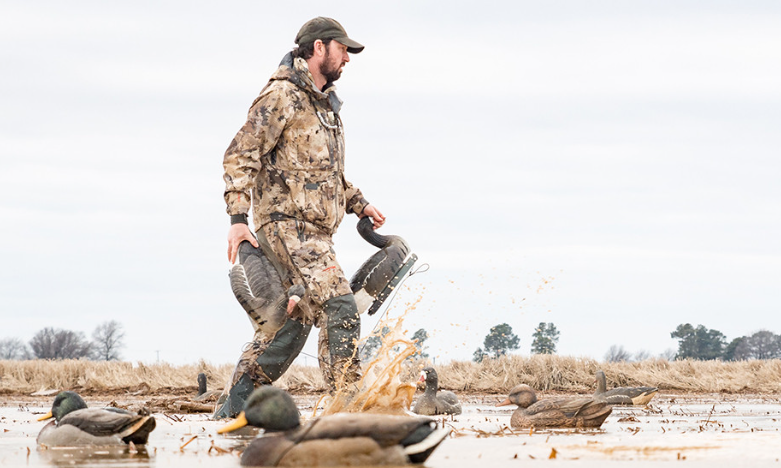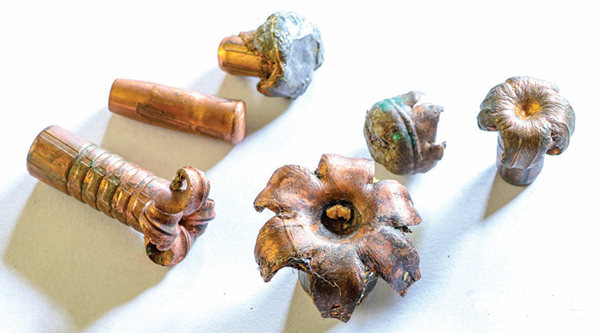Handheld Armor Has Come A Long Way Since Roman Times
Story by Robin TaylorTurn on the 6 o’clock news, and eventually you’ll see a “bulletproof” shield in use. They’re standard equipment for law enforcement entry teams, but thanks to Sandy Hook, civilian-market shields now include everything from bulletproof clipboards and backpacks to full-on police-style shields. School districts in a number of states have started working shields disguised as whiteboards into their “lockdown” strategies. “For the past 15 years, most of what we’ve done is for the military,” says Emily Heinauer with Hardwire LLC (hardwirellc.com). “We armored the sides of many of the trucks going to Iraq and Afghanistan.

During that time we started making clipboards for law enforcement, and after Sandy Hook, we adapted that to bulletproof whiteboards for educational and commercial settings. Our school and home products have dual functionality as dry erase boards for daily use and ballistic protection.” A Hardwire Level IIIA whiteboard weighs less than 4 pounds, and measures 18 inches by 20 inches. While small by comparison to a fullsize shield, it sells for under $300, and it’s practical. Backpack inserts go for even less.

I did some digging into “the way of the shield” with the help of Bill Blowers of Puyallup, Wash. He serves as a police sergeant on a large regional SWAT team and is the owner of Tap- Rack Tactical (tap-rack.com). Police departments use ballistic shields for warrant service and other calls a lot, so Blowers offered to throw me in with a dozen new SWAT officers who needed to get up to speed. Training with Blowers turned out to be one of the highlights of my year.
A BALLISTIC SHIELD ACTS like a bulletproof vest with a handle. It is rated like a vest (IIIA, III, IV), and has similar capabilities. Depending on when the shield was made, it could contain any of several fibers, including Dyneema. The hard format of the shield allows using polyethylene fibers to stabilize and protect the material from humidity, wear and UV light, making it vastly more durable. Typical examples last for decades. (Soft Kevlar armor vests degrade when exposed to moisture and UV light, and must be replaced every few years.) The typical polycarbonate view port stops bullets, helping the overall shield to absorb bullets like a sponge.

But aren’t shields really heavy? Not anymore. The total weight of a typical IIIA shield has dropped from around 40 pounds to a little over 20, including on-board floodlights. For the officer in the field, that’s tremendous because the “shield man” does heavy, surprisingly technical work. For the home defender who isn’t built like a SWAT cop, the lighter shields offer mobility, and smaller-bodied people can use them effectively. If you’re willing to go smaller and simpler, shields can be made even lighter. What I’ll call “three-quarter-sized” 20×30-inch shields can weigh just 5.8 pounds. Drop the on-board lights, and a full-size Level IIIA model can be as light as 8.2 pounds, including a view port.

ROMAN LEGIONNAIRES LOVED THE curved-rectangle “scutum” shield for its wide arc of protection, and its ability to interlock with a neighbor’s shield to form a continuous wall. Modern shield makers have taken the hint, and by the end of our class, my group formed into miniature versions of the old Roman “tortoise” – one row of shields facing front; another laid over the top to form a roof – in order to enter stairwells or warehouses with overhead threats.

For the static defender, the curved rectangle offers a protective arc, coupled with a wide viewing area (hold your forehead against the top of the view port). In Simunition fights with my classmates, a moving shield man was terribly vulnerable to shots fired at the legs, but if he knelt and anchored his pistol’s trigger guard against the side of the shield, he offered no target at all. (Given time to prepare, police shield men strap on shin and leg protectors.) Although it lacks a view port, a 20×30 flat shield offers most of that protection at a tiny fraction of the weight and cost.
Shield bearers give up offensive potential to protect the team. It’s their partners’ job to shoot around and over the shield, while the shield bearer deals with blind corners and pointblank threats with his pistol. Done right, that buddy system is downright formidable. Done wrong, that “around and over” business can bite the shield bearer. Blowers’ agency has seen what happens when it goes bad. When one of their own fired his AR-15 with the muzzle even with the shield man’s ear, the shield man suffered permanent hearing loss. To his great credit, the shield man stayed in the fight, but was in tremendous pain. The rifle wore a standard birdcage flash hider – just imagine what damage a side-venting recoil compensator could have done. Suppressed rifles make a lot of sense for “around and over.” Sticking with pistol-caliber carbines and/or a shotgun makes good sense too.
Common shotguns lack any legal bother, put the muzzle ahead of the shield (when used properly), and pack a massive short-range punch. Love ’em or hate ’em, lasers also come into their own around a shield. Using a laser-aimed pistol, a shield man can remain totally protected by the shield and still put accurate fire on target. Instead of sticking his arm out into harm’s way to use the sights, the shield man locks the bottom of his pistol’s trigger guard against the side of the shield, aiming with the laser alone. Having a pistol on each side of the body (what Blowers calls a “Yosemite Sam rig”) gives the shield bearer the ability to rapidly switch sides as he moves. For the barricaded defender, however, complex switching is not in the cards. If our focus is to hold ground, a single laser-aimed handgun is plenty.
 WHAT’LL A SHIELD STOP, you may be asking by now. All the available ballistic shields stop baseball bats, thrown rocks, knives, chemical agents and onrushing bad guys in ways that a vest just can’t. For that sort of protection, shields have no equal. However, this is a balancing act. A briefcase or clipboard shield is like a pocket pistol. It’s nobody’s first choice, and hard to use well. A full-size Level IV is like a heavy machine gun – you’ll want wheels and a pickup to move it very far. According to Blowers’ thinking, Level IIIA shields offer the best balance. They stop all common handgun and shotgun cartridges – including 12-gauge slugs. When his department decided to retire some older IIIA shields, Blowers trotted one out to the range for testing. The shield stopped everything it was rated to stop – including 12-gauge hunting slugs and a broadhead hunting arrow. The viewport took multiple .45 hits in the same spot before it finally failed. The slug pushed out a fair-size dent in the back of the shield – but it stopped it.
WHAT’LL A SHIELD STOP, you may be asking by now. All the available ballistic shields stop baseball bats, thrown rocks, knives, chemical agents and onrushing bad guys in ways that a vest just can’t. For that sort of protection, shields have no equal. However, this is a balancing act. A briefcase or clipboard shield is like a pocket pistol. It’s nobody’s first choice, and hard to use well. A full-size Level IV is like a heavy machine gun – you’ll want wheels and a pickup to move it very far. According to Blowers’ thinking, Level IIIA shields offer the best balance. They stop all common handgun and shotgun cartridges – including 12-gauge slugs. When his department decided to retire some older IIIA shields, Blowers trotted one out to the range for testing. The shield stopped everything it was rated to stop – including 12-gauge hunting slugs and a broadhead hunting arrow. The viewport took multiple .45 hits in the same spot before it finally failed. The slug pushed out a fair-size dent in the back of the shield – but it stopped it.

Most shields have a standoff device to deal with back face deformation like this; some use a pad, while others use nylon webbing. Keep in mind, shields can stop a hard impact like that without “taking the hit” on your flesh the way you would wearing a soft vest. Vest owners often wear tiny shields (“trauma plates”) to spread the blow and protect their sternum from impacts like that. But what won’t a shield stop? After that initial test, Blowers set up a mannequin wearing a IIIA vest behind the shield and fired the common 62-grain M855 “green tip” 5.56 NATO at it. The bullet punched the shield and continued through the vest, the dummy, and the IIIA vest’s back panel before drilling a hole through the support structure beyond. Yowza!
Congress decreed the mild-steel-cored M855 to be non-armor piercing through legislation, but to soft armor and light shields, it’s a major threat. Rifle ammo of any form will punch IIIA, making a chest plate mission critical equipment if that’s part of the expected fight. To stop rifle ammo, you need Level III, and common low-grade penetrators like the “green tip” demand Level IV. Such armor weighs four times as much as typical IIIA, transforming that nimble, 20-pound IIIA shield I mentioned earlier into an unwieldy 80-pound slug. Even the neat little IIIA 20x30s offered by Hardwire go to almost 20 pounds for Level III. Want Level IV in that size? Forget it.

at a sandwich shop is actually a Level IIIA shield, and runs around $300. The
manufacturer, Hardwire, began selling them in early 2013. (HARDWIRE LLC)

WORKING WITH BLOWERS’ CREW, I learned why shield men treasure reliable super-high-capacity magazines. Take a moment and imagine reloading while holding a shield in one hand. Now try clearing a double-feed. We all did it, but it’s slow – very slow. “Take this part of the pistol and punch yourself in the thigh,” coached Blowers – pointing to the area just ahead of the rear sight, then punching himself with it. By driving the pistol hard at his thigh, the slide would “stick” against his pant leg while the frame glanced down and away, cycling the slide. Like most techniques of this sort, let me say right off: Don’t try this at home (or your home range) until you get proper training in it prior to live fire.
There are very real risks for accidental discharge (as Blowers emphasized) if you don’t perform it properly. Blowers warned us repeatedly, and emphasized indexing (keeping the trigger finger on the frame) while keeping the muzzle pointed away from yourself or others. For me, the technique worked OK on plain cloth, but worked great if I could hook my pants pocket with the rear sight. Does it work? Sure enough, during the live fire section, my trusty G17 jammed. Thanks to Blowers’ coaching, I was able to punch myself and get back in the fight in seconds.
IN THE MARKET FOR a shield after reading this article? A little shopping online gave me a wide range of bullet-resistant options. Hardwire’s “notched” 20×30-inch Level IIIA with no viewport costs just $549, about what you’d spend for a Glock or S&W M&P. A curved shield, Level IIIA with viewport, runs $1,500. A briefcase/backpack insert goes for as little as $99. Top IIIA shields meant for heavy law enforcement use run in the neighborhood of $2,500 apiece – including the floodlights and other goodies.
Realistically, a full-size shield is something like a sports car – expensive, specialized, but tremendously good at what it’s designed for. They’re not for everyone, but when it comes to “hardening” yourself or your home against serious attack, ballistic shields are the ultimate defensive accessory.










